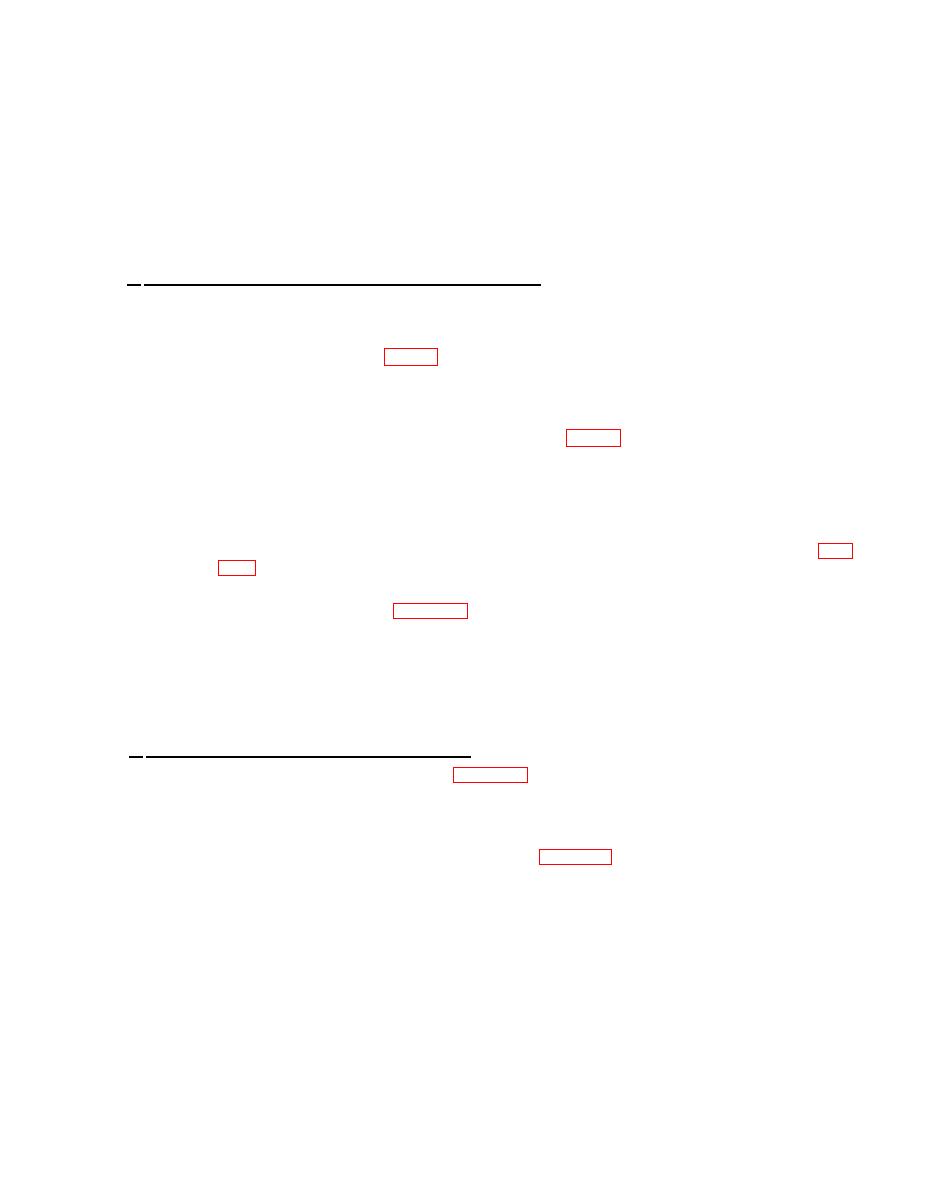
TM9-2330-207-14
2.
Test. With brakes released, insert a smalI testing rod through one of two inspection holes
in air chamber. Mark testing rod at surface of mounting bracket when testing rod contacts
push rod in air chamber. Apply brakes and again mark testing rod at surface of mounting
bracket with testing rod in contact with push rod. Withdraw testing rod and measure
distance between marks. The distance between marks will indicate amount of push rod
travel. Brakes should be adjusted to permit a minimum of 1/2 inch travel and a maximum
of 7/8-inch travel. Adjust brakes (a above) as necessary).
(1) Drainage of moisture. To drain accumulated moisture, remove drain plug. Install plug after draining.
(2) Operating tests.
(a) With air hose couplings (fig. 2-6) connected to towing vehicle, apply brakes and check to be
sure that brakes of all semitrailer wheels apply properly.
(b) Release brakes and check to be sure that each brake releases promptly.
(c) With brake system fully charged, close shutoff cock in emergency line on towing vehicle and
disconnect air hose coupling tagged EMERGENCY (fig. 2-6). Check to be sure semitrailer
brakes apply automatically.
(d) Connect air hose coupling tagged EMERGENCY, open shutoff cock on towing vehicle, and
check to be sure brakes release automatically.
(3) Leakage tests.
(a) With air brake system connected, apply soapy water to flanges which hold diaphragm (figs.
flanges and tighten coupling as required.
(b) Coat exhaust check valve (figs. 4-40 and 4-41) with soapsuds. Apply brakes.
(c) Release brakes and apply coating of soapsuds to exhaust port.
with soapsuds.
(e) Leakage tests must not exceed a 1-inch bubble in 3 seconds. If excess leakage is found,
replace emergency relay valve.
h. Air Reservoir, Drainage of Moisture and Tests.
(1) Drainage of moisture. Open drain cock (figs. 4-40 and 4-41) on air reservoir. Close drain cock
after drainage.
(2) Test and check for serviceability. With air brake system connected to towing vehicle, coat drain
reck, pipe plugs, connections between emergency relay valve and reservoir, connector attaching
air line to air reservoir, and outside of air reservoir (figs. 4-40 and 4-41) with soapsuds. No
leakage is permissible. Tighten any leaking connections. Inspect for damage or corrosion. Replace
reservoir if it leaks or if any damage or corrosion is found that would weaken reservoir.

